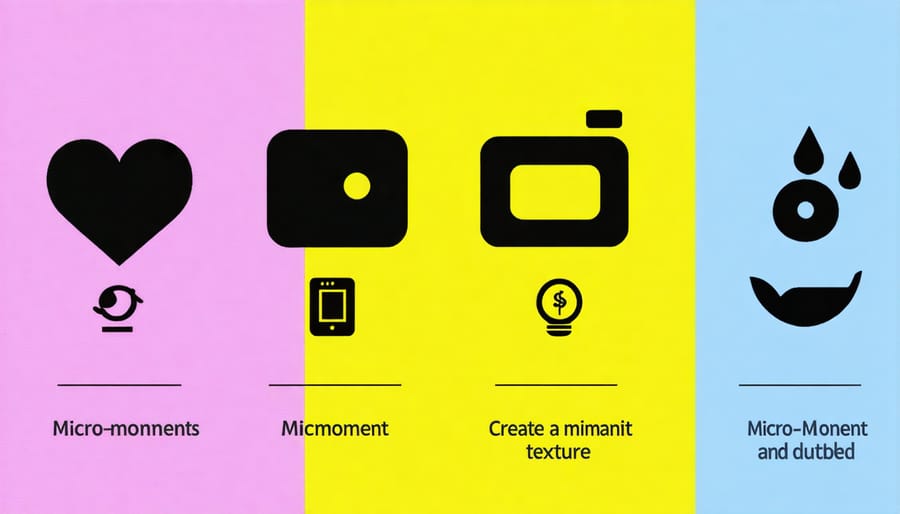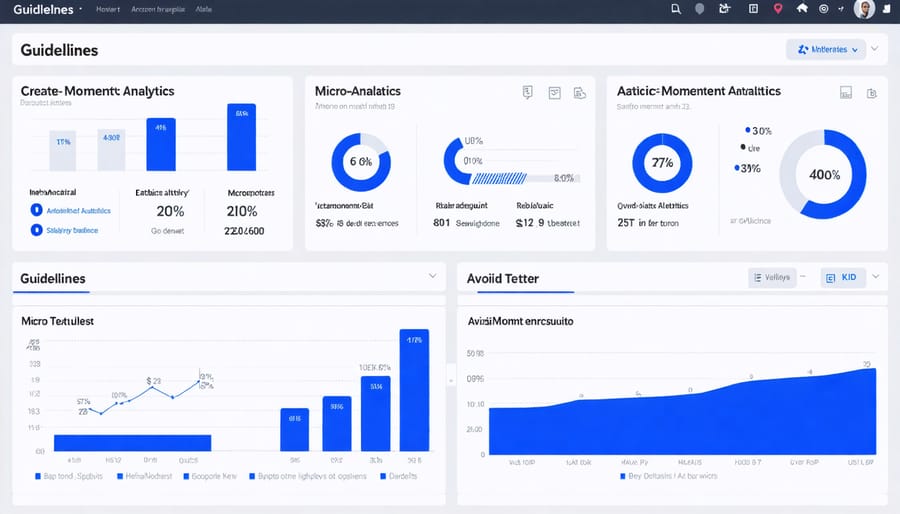How Google’s Micro-Moments Transform Your Brand’s Digital Impact

In today’s mobile-first world, micro-moments represent the critical touchpoints where consumers make instant decisions about brands, products, and services. Google’s groundbreaking micro-moments framework revolutionized how businesses approach digital marketing by identifying four key consumer intent-driven moments: “I want to know,” “I want to go,” “I want to do,” and “I want to buy.” These split-second opportunities, triggered by immediate consumer needs, have transformed traditional marketing funnels into dynamic, real-time engagement opportunities.
Research shows that 96% of users reach for their smartphones to find immediate answers, making micro-moments the new battleground for brand attention. For businesses, mastering these moments means being present with relevant, helpful content exactly when customers need it most. This shift from traditional marketing to moment-based engagement has become essential for survival in the digital marketplace, where consumer decisions are made in fractions of seconds across multiple devices and platforms.
By understanding and optimizing for micro-moments, brands can create more meaningful connections, drive higher conversion rates, and establish lasting customer relationships. The key lies in anticipating customer needs, delivering instant value, and maintaining a seamless presence across all digital touchpoints.
Understanding Google’s Micro-Moments Framework

The Four Critical Micro-Moments
Google identifies four critical micro-moments that shape consumer behavior and decision-making in the digital age. Each moment represents a different intent and opportunity for brands to connect with their audience.
I-want-to-know moments occur when consumers seek information without immediate purchase intent. These could be product research, how-to queries, or general information gathering. Brands can capitalize on these moments by providing helpful, informative content that answers specific questions.
I-want-to-go moments happen when consumers search for local businesses or nearby services. These searches often include terms like “near me” or specific location names. Businesses must optimize their local presence and ensure their location information is accurate across all platforms to capture these opportunities.
I-want-to-do moments arise when people need help completing a task or trying something new. These could range from recipe searches to DIY projects. Brands can engage audiences by creating tutorial videos, step-by-step guides, or interactive content that helps users accomplish their goals.
I-want-to-buy moments represent the critical purchasing phase when consumers are ready to make a transaction. These moments require businesses to provide seamless purchase experiences, detailed product information, and compelling calls-to-action. Mobile optimization is particularly crucial here, as many purchase decisions happen on smartphones.
Understanding and optimizing for these four micro-moments enables businesses to create more targeted, relevant content that meets users exactly where they are in their journey.
Building a Micro-Moments Content Strategy
Identifying Your Brand’s Key Micro-Moments
To effectively identify your brand’s key micro-moments, start by analyzing your customer journey and mapping touchpoints where potential customers might turn to their devices for immediate answers or solutions. Begin by examining your existing analytics data to understand when and how customers interact with your business online, which will help shape a content strategy that resonates with your audience.
Focus on these four primary types of micro-moments:
– “I want to know” moments when customers research information
– “I want to go” moments when they’re looking for local businesses
– “I want to do” moments when they need how-to guidance
– “I want to buy” moments when they’re ready to purchase
Create a micro-moment map by:
1. Surveying your customers about their decision-making process
2. Analyzing your website’s search queries and popular content
3. Reviewing customer service interactions and frequently asked questions
4. Monitoring social media conversations about your brand or industry
Document these moments in a spreadsheet, noting:
– The specific customer need or question
– The device typically used
– The preferred content format (video, text, images)
– The location or context of the search
– The desired immediate outcome
This systematic approach will help you identify gaps in your current content and reveal opportunities to better serve your customers during these crucial decision-making moments.

Content Optimization for Micro-Moments
To effectively optimize content for micro-moments, businesses need to create targeted, easily digestible content that addresses specific user needs at each moment. Start by mapping your content to the four main micro-moment types: “I want to know,” “I want to go,” “I want to do,” and “I want to buy.”
For “I want to know” moments, focus on creating informative content like how-to guides, FAQs, and educational videos that provide immediate answers. Ensure your content is mobile-optimized and loads quickly, as these moments often occur on-the-go.
When targeting “I want to go” moments, emphasize location-based content with clear directions, store hours, and inventory availability. Implement local SEO best practices and maintain accurate Google My Business listings.
For “I want to do” moments, develop step-by-step tutorials, video demonstrations, and interactive content engagement features that help users accomplish specific tasks. Make these resources easily shareable and accessible across all devices.
“I want to buy” moments require streamlined purchase paths with clear pricing, product comparisons, and prominent call-to-action buttons. Optimize your checkout process for mobile users and provide multiple payment options.
Remember to keep content concise, use descriptive headlines, and incorporate relevant keywords naturally. Utilize structured data markup to help search engines better understand and display your content in relevant micro-moments.
Measuring Micro-Moment Success

Essential Analytics and KPIs
To effectively measure the success of your micro-moments strategy, focus on these key performance indicators (KPIs) and analytics metrics. Start by tracking engagement rates across different micro-moment touchpoints, including click-through rates, time spent on content, and bounce rates for specific landing pages designed for each moment.
Monitor conversion metrics specific to each micro-moment type:
– I-want-to-know: Resource downloads, newsletter signups
– I-want-to-go: Store locator usage, map clicks
– I-want-to-do: Tutorial video completion rates, how-to guide engagement
– I-want-to-buy: Add-to-cart rates, purchase completion
Pay special attention to mobile metrics, as micro-moments are predominantly mobile-driven. Track mobile session duration, mobile conversion rates, and cross-device user journeys. Use attribution modeling to understand how different micro-moments contribute to final conversions.
To transform analytics into content strategy, examine user behavior patterns and content performance across different micro-moments. Look at speed metrics like page load times and mobile responsiveness, as these significantly impact user experience during micro-moments.
Set up custom goals in Google Analytics to track specific micro-moment interactions and measure the effectiveness of your targeted content strategy.
Implementing a micro-moments strategy is no longer optional in today’s fast-paced digital landscape – it’s essential for staying competitive and meeting customer expectations. By focusing on these critical touch points where consumers make instant decisions, businesses can significantly improve their digital presence and customer engagement.
Start by identifying the most relevant micro-moments for your business and mapping them to your customer journey. Create content that specifically addresses these moments, ensuring it’s mobile-optimized and easily accessible. Remember to prioritize speed and convenience in your digital solutions, as users expect immediate answers during these crucial decision-making instances.
Measure your success through relevant metrics like mobile engagement rates, local search performance, and conversion rates during specific micro-moments. Continuously refine your approach based on data and user feedback. Consider implementing automated solutions to deliver personalized responses at scale while maintaining authenticity in your communications.
The key to success lies in staying agile and responsive to changing consumer behaviors. By embracing micro-moments as part of your broader digital strategy, you’ll be better positioned to capture customer attention when it matters most and drive meaningful business results.
Leave a Reply